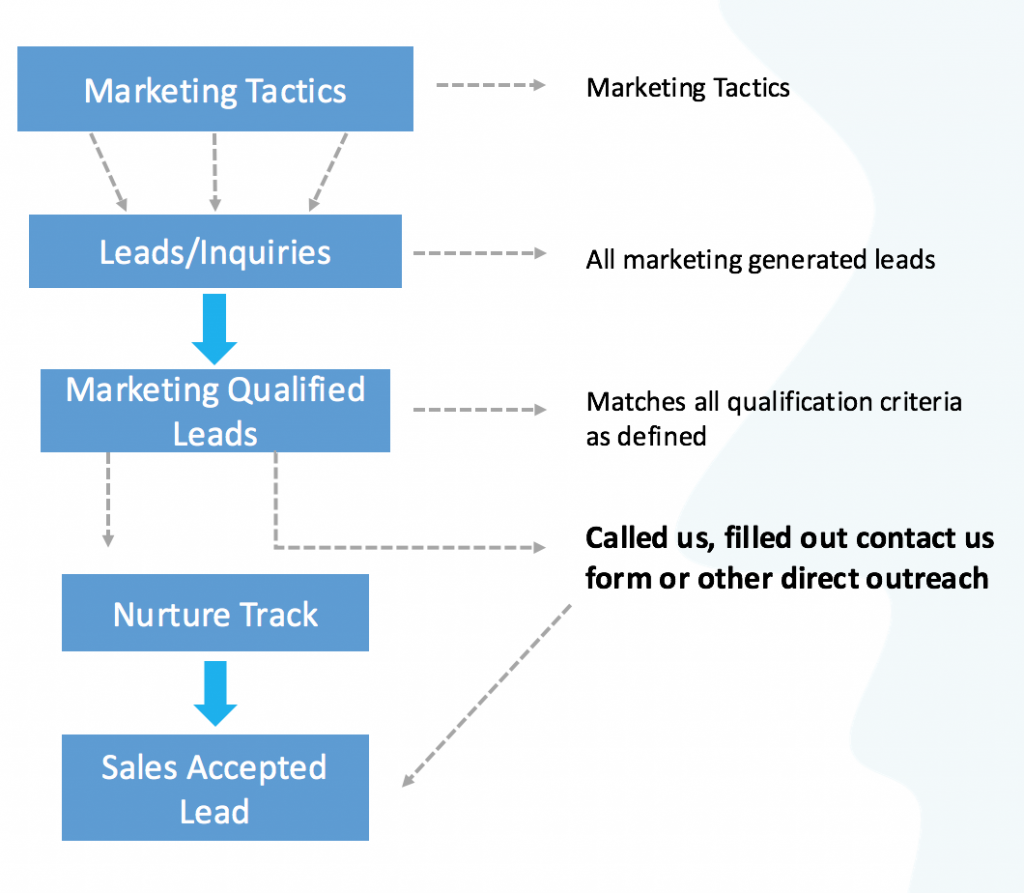Ever wonder why some B2B companies scale fast and others don’t? Do you know how small tech startups become global unicorns overnight whereas so many others fail?
Well, they have one thing in common and that is they established a demand generation practice early on during their growth lifecycle.
Many SaaS leaders like Jason Lemkin of SaaStr swear that the first thing tech startups should do is create a demand generation function. Demand generation has helped many companies get off the ground with speed. For those of you who are new to the concept, there are two forms of demand – capturing demand and creating demand.
- Hand raisers – People who want a certain product or service and search for you online.
- Demand Generation – People who don’t know about your product or service so you have to create demand to attract them.
Demand Generation Waterfall Chart
The classic demand generation waterfall chart created by SiriusDecisions has become the de facto industry standard, if you will, as many demand generation folks live by this chart.
What the waterfall chart does is list down all the steps to undertake while creating a demand generation function. Basically, it starts at the very top. And then predictably goes to the last business question which is, did you close the deal or not?
If you got the sale you know your marketing is working.
The Marketing Qualification Process
Step 1: Inquiry
Let’s discuss the first item on the waterfall chart. The first thing they’ve done is shown two ways leads come in: inbound and outbound.
Inbound pushes all leads in by creating new tactics through search, marketing campaigns or digital marketing. Inbound is when people come to you.
Outbound is a pull function mostly related to teleprospecting or telemarketing. Trade shows and events of that nature can be outbound. But that’s not how SiriusDecisions qualifies leads (or inquiries as they like to call it) as inbound and outbound. First, they go into a marketing qualification bucket.
Step 2: Marketing Qualification
Automation Qualified Leads (AQLs) enter a queue (as they refer to it) where they look at certain fields. These fields include the person’s name, email and company’s size. If the lead matches those criteria then it’s a qualified lead.
From there the lead goes to the next funnel mode which is the Teleprospecting Accepted Leads (TALs). That means somebody is going to look at that lead, call them and qualify the lead further.
If the lead passes those qualification criteria, then it goes to the next step which is the Teleprospecting Qualified Leads (TQLs) and Generated Leads (TGLs). Many times you have leads that are generated and build on prospecting and those are known as TGLs.
Step 3: Sales Qualification
Once you’re past that stage, the lead enters Sales Qualification. Now after the lead has passed through the marketing qualification bucket it now goes into sales qualification, and this is assuming that telemarketing or teleprospecting is part of marketing, which it should be.
Now it’s time to go into the sales bucket. The sales bucket has 2 options: one is a Sales Generated Lead (SGLs) where the sales folks are hunting actively to find prospects. And if they are hunting, then you know they are going to generate those leads.
The other ones are generated by marketing and go into a Sales Accepted Leads, also known as SAL. Both essentially go into Sales Qualified Leads, also known as SQLs.
Step 4: Close
The last phase which is Close indicates if the deal is done or not done. Did the salesperson win the business and close the sale or not?
Sales Chart
Now, if you are just starting out and want a simpler sales process, then you can create a simple waterfall chart like the one shown below:

In the chart, funnel your leads to Marketing Qualified Leads (MQLs) based on your audience qualification criteria and remove all the mickey mouse type of leads. After that, either your outbound team can qualify the lead further or you can push it back to marketing nurture track. Hopefully, you have further nurtured those leads and assigned some sort of lead scoring to qualify them as a Sales Accepted Lead (SAL).
Basically, that’s how you create a demand generation process. Waterfall charts are great tools for aligning Sales & Marketing so they work together toward the same revenue goals.
To learn how one company used a demand generation to create leads, read our case study.
Now, let’s go and get ‘em!
Read the full article here













